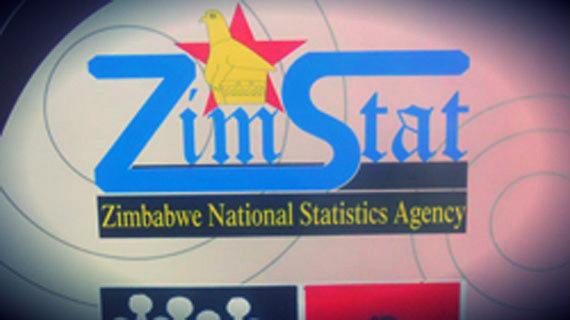News / National
Zimbabwe's rebasing pushes GDP to US$45,7bn
19 hrs ago | Views

The government's recent rebasing of Zimbabwe's economy has lifted its gross domestic product (GDP) valuation to US$45,7 billion and gross national income (GNI) per capita above US$3 000 - even as exchange rate distortions cloud the true picture of economic performance.
In June, the Zimbabwe National Statistics Agency (ZimStat) released its 2023 and 2024 GDP report showing a widening gap between nominal growth on paper and real economic activity. While the economy expanded by just 1,7% in 2024, GDP at market prices rose nearly 3% to US$45,71 billion, from US$44,43 billion in 2023.
The statistical revision comes after the April 2024 introduction of the Zimbabwe Gold (ZiG) currency, which replaced the Zimbabwe dollar and reshaped exchange rate calculations.
Presenting the 2025 Mid‑Term Budget Review, Finance, Economic Development and Investment Promotion Minister Mthuli Ncube said the rebasing exercise, coupled with the results of the national economic census, had led to a sharp upward revision of the economy's size.
"The size of the economy is now approximately US$45,7 billion, up from the earlier estimate of US$35,2 billion in 2024. This implies that both GDP and GNI per capita are now above US$3 000," Ncube said.
The adjustment has lowered key fiscal ratios. The revenue‑to‑GDP ratio declined from 14,6% to 11,6% in 2023, and from 18% to 14,3% in 2024. Public debt to GDP fell from above 60% to 46,5%, below the sub‑Saharan average of 61%.
"This essentially means Zimbabwe is not over‑indebted but faces a debt service and liquidity challenge," Ncube said. "Restoring debt sustainability requires resolving the large stock of arrears while easing current liquidity pressures."
Ncube said growth in 2024 fell short of earlier projections mainly due to underperformance in agriculture, manufacturing and tourism.
The 2025 Economic Census - covering economic activity for 2023 - identified 204 798 operational establishments, with the vast majority (76,1%) in the informal sector. Only 1,6% were classified as large or medium‑sized, while 98,4% were small and micro‑scale enterprises.
ZimStat has since revised national accounts for 2023 to reflect the census findings and rebasing adjustments.
While the rebasing paints a larger economy on paper, analysts warn that structural weaknesses remain. Exchange rate instability, high inflation and low productivity continue to weigh on real growth and household incomes.
The government is banking on stabilisation measures, exchange rate management, and improved sectoral performance to sustain growth and close the gap between statistical valuations and actual economic wellbeing.
In June, the Zimbabwe National Statistics Agency (ZimStat) released its 2023 and 2024 GDP report showing a widening gap between nominal growth on paper and real economic activity. While the economy expanded by just 1,7% in 2024, GDP at market prices rose nearly 3% to US$45,71 billion, from US$44,43 billion in 2023.
The statistical revision comes after the April 2024 introduction of the Zimbabwe Gold (ZiG) currency, which replaced the Zimbabwe dollar and reshaped exchange rate calculations.
Presenting the 2025 Mid‑Term Budget Review, Finance, Economic Development and Investment Promotion Minister Mthuli Ncube said the rebasing exercise, coupled with the results of the national economic census, had led to a sharp upward revision of the economy's size.
"The size of the economy is now approximately US$45,7 billion, up from the earlier estimate of US$35,2 billion in 2024. This implies that both GDP and GNI per capita are now above US$3 000," Ncube said.
The adjustment has lowered key fiscal ratios. The revenue‑to‑GDP ratio declined from 14,6% to 11,6% in 2023, and from 18% to 14,3% in 2024. Public debt to GDP fell from above 60% to 46,5%, below the sub‑Saharan average of 61%.
"This essentially means Zimbabwe is not over‑indebted but faces a debt service and liquidity challenge," Ncube said. "Restoring debt sustainability requires resolving the large stock of arrears while easing current liquidity pressures."
Ncube said growth in 2024 fell short of earlier projections mainly due to underperformance in agriculture, manufacturing and tourism.
The 2025 Economic Census - covering economic activity for 2023 - identified 204 798 operational establishments, with the vast majority (76,1%) in the informal sector. Only 1,6% were classified as large or medium‑sized, while 98,4% were small and micro‑scale enterprises.
ZimStat has since revised national accounts for 2023 to reflect the census findings and rebasing adjustments.
While the rebasing paints a larger economy on paper, analysts warn that structural weaknesses remain. Exchange rate instability, high inflation and low productivity continue to weigh on real growth and household incomes.
The government is banking on stabilisation measures, exchange rate management, and improved sectoral performance to sustain growth and close the gap between statistical valuations and actual economic wellbeing.
Source - Southern Eye




































